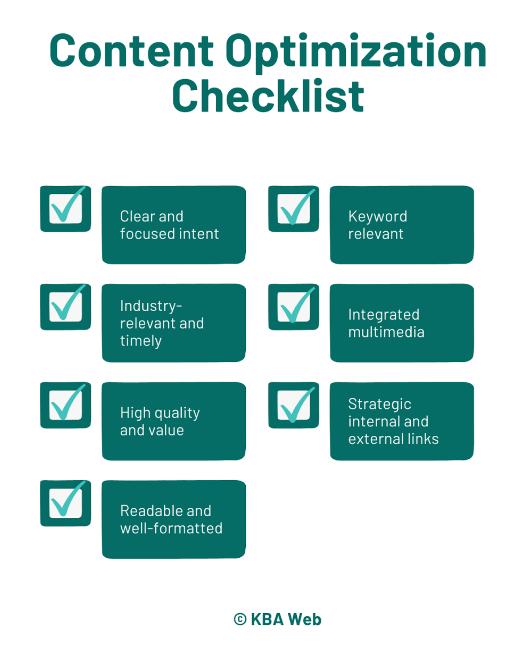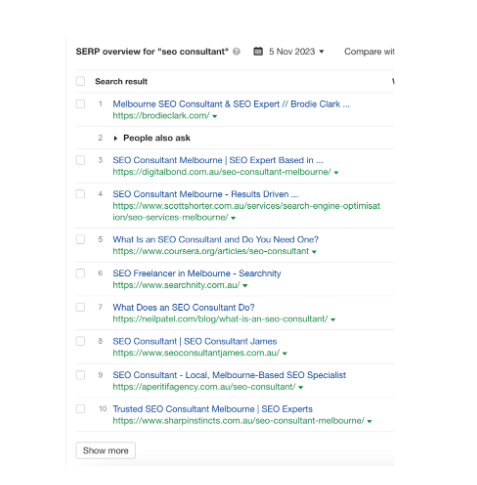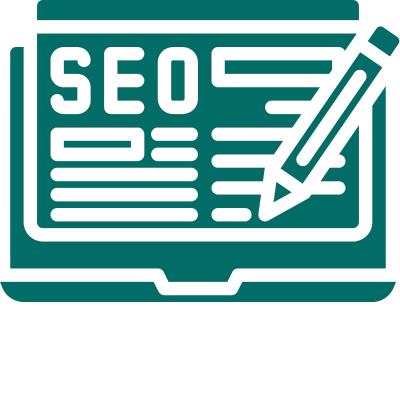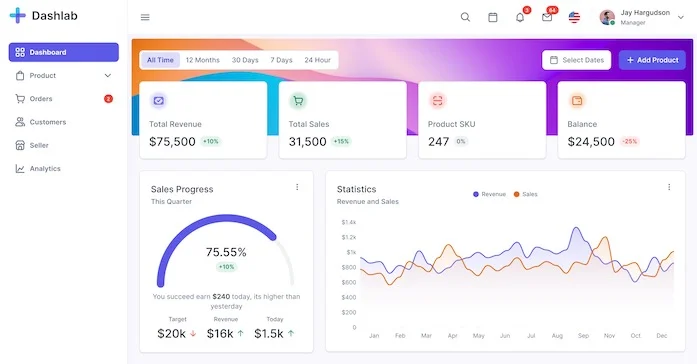“I made really really great content. But why isn’t it ranking after all this time?” Well, it could be lacking in the realm of content optimization.
Content optimization requires using methods to enhance your content. But what does “enhance” mean? Generally, it means making it more understandable for search engines and more valuable and enjoyable for your intended audience.
In this guide, you’ll discover what content optimization involves and how it improves your content. You’ll find out its benefits for your site, effective content optimization strategies, and mistakes to avoid.
Table of Contents:
- What is content optimization?
- Why is content optimization important?
- How do I know if I need to optimize my content?
- What are the Keys to Content Optimization?
- How to optimize content for SEO: Best practices
- Common mistakes when optimizing website content
- How often should you optimize content?
- What is the fastest/quickest content optimization strategy?
What is content optimization?
Content optimization is the process of refining your content to make it more appealing to both search engines and your target audience. As a result, it is more likely to rank higher in search results.
This involves strategies such as keyword optimization, improving readability, refining meta tags, and so on (more on these content optimization strategies later on).
Wait, does content optimization mean I have to do double the work – one for the search engine and another for my target audience? Well, not exactly…
Optimizing content for users and aligning it with Google’s standards aren’t conflicting tasks.
See, Google has one goal: to deliver the most complete and accurate answers to users’ search queries…
So, when your content is not just informative but also engaging for users – a people-first approach – Google loves that, improving your chances of ranking higher.
Why is content optimization important?
You already know how content optimization can help boost your page’s rankings and improve user experience. But what other tangible benefits does it bring?
1. More quality traffic, more conversions
When you optimize your content, not only does it bring in more visitors to your website. It also ensures that they are the people genuinely interested in what you offer or talk about.
Let’s say you run an online software company that provides project management tools. With optimized web content, their company’s content is more likely to pop up to users searching for terms like “best project planning tools”.
As these people understand how your offerings can benefit them, they have a higher chance of converting, whether that’s signing up for a trial or making a purchase.
2. Better user engagement
Website content optimization involves looking for opportunities to keep users interested and involved throughout their visit.
This includes making content easier to read, integrating interactive elements that catch attention, and possibly including videos or images that tell a story.
As a result, users tend to spend more time on your page and may even share your content on their socials. They are also more likely to visit other related pages on your site, reinforcing benefit number 1 earlier.
3. Authority and thought leadership
Content optimization helps your brand or profile become just as trusted and respected as those experts you follow on Twitter or LinkedIn.
Like web content these leaders share, optimized content is comprehensive and well-researched, providing unique insights or innovative solutions. Think of detailed guides or in-depth case studies.
By consistently offering such content, users will begin to trust your expertise, positioning you as a trusted source and strengthening your authority in the field.
4. More backlinks
When your content is unique, informative, and helpful, you encourage other websites to reference or link back to your material. This increases your website’s authority.
And since backlinks are one of Google’s top ranking factors, having more of these can (generally) push your site higher in search results.
This creates a cycle – backlinks enhance your site authority, helping you climb higher in search results. The more visible and trusted you become, the more links you might get. And it keeps going, continuing the process of increased visibility and credibility.
How do I know if I need to optimize my content?
Planning for content optimization right from the start is always the right move. But what about those older pieces of content you uploaded ages ago without much thought about optimization?
Below are some telltale signs that your older content might need a bit of sprucing up:
1.You observe low traffic
Low numbers suggest that your content might not be reaching or appealing to your target audience. This could also result from your page not ranking well in search results.
2. You have content that is outdated or no longer relevant
This discrepancy in the ‘freshness’ of your content can impact your authority and trustworthiness in the eyes of users and search engines alike.
For instance, let’s say you still have a blog post titled “Top Tech Trends in 2015”. In 2023, the trends have significantly evolved, making the information in the blog post obsolete.
3. Your page has high bounce rates
High bounce rates could indicate that visitors aren’t finding what they need or expect on your page. Typically, this happens as a result of inadequate content structure or poor alignment with user intent, both of which are crucial for capturing your audience’s attention right from the start.
4. Your competitors are excelling where you’re falling short
This implies that your rivals might be doing something right that you’re currently missing or not doing well enough. Although it might seem negative initially, it’s actually an opportunity to optimize your content. By learning from their successful techniques, you can aim to meet or even surpass the standards they’ve set.
4. You have low conversion rates
If your content isn’t driving the expected number of conversions, it suggests a potential need for optimization. This could be due to unclear calls-to-action, poor layout, unengaging content, or other factors that impede the desired action.

What are the Keys to Content Optimization?
So, how does well-optimized content look like? What defining characteristics make it stand out? Below is a quick content optimization checklist you can use to assess the effectiveness of your content:
1. Clear and focused intent
- Does it solve your audience’s specific problem or answer their question?
- Does it align with my audience’s search intent?
- Is it easy to understand for those whom content is made for?
- Does it clearly explain what the topic is about?
- Do your meta titles and descriptions provide clear and informative snippets for search results?
2. Industry-relevant and timely
- Is it up-to-date with the latest information in the industry?
- Will it still be useful in the future?
- Does it talk about what’s happening in the industry right now?
3. High quality and value
- Does it offer unique insights, information, or solutions?
- Is the information trustworthy and backed up by reliable sources?
- Does it cite people, organizations, or real-life events
- Is your content the appropriate length based on the topic and user intent (i.e. does it cover everything)?
- Is the content presented in an interesting or unique way?
4. Keyword relevant
- Are the chosen keywords aligned with the user’s search intent?
- Are the relevant keywords naturally integrated within the content?
- Are the relevant keywords integrated into title tags, meta descriptions, and headings?
5. Integrated multimedia
- Are images, videos, and infographics effectively integrated?
- Do multimedia elements help users understand and engage with the page better?
- Do interactive elements like polls, quizzes, or surveys enhance user engagement and understanding?
6. Readable and well-formatted
- Is the content well-structured, with clear headings and paragraphs?
- Does the heading hierarchy and progression of topics make sense?
- Is the content skimmable?
- Does your content maintain proper grammar, spelling, and punctuation?
7. Strategic internal and external links
- Are internal links thoughtfully placed to guide users to relevant content within your website?
- Do your external links come from authoritative sources, supporting your content?
Of course, the above is merely a guide. Best to make your own content optimization checklist that perfectly aligns with your needs and goals.
How to optimize content for SEO: Best practices
Now you know the characteristics that make a well-optimized content. But how do you actually optimize your content? Below are practical steps and best practices you can follow.
1. Perform keyword research
If you don’t know yet, keywords are Google’s way of deciphering the content’s subject matter and user intent. This enables the search engine to match your content with people’s search queries, ultimately leading your content to those users who seek that specific information.
Thus, you must find and select the right keywords. This means keywords that:
- relate closely to your content’s subject matter
- have high search volume but low competition
- have high traffic potential
- have an upward trend
To do so, you must use keyword research tools, such as Ahrefs Keyword Explorer or SEMrush Keyword Overview tool.
These tools help find general “seed” keywords related to your field, serving as initial ideas for topics. You’ll be able to uncover specific, “long-tail” keywords based on these seeds, indicating clearer search intent. Moreover, you’ll discover other related keywords that add context to your content.
This is where working with a trusted SEO agency can bring many advantages. These professionals can properly analyze the data from these tools to identify keywords that are worth ranking for.
Following this, you’ll need to incorporate these keywords naturally and strategically within the content, specifically in:
- Headings (H1s, H2s, H3s…)
- Meta title and description
- Text body
- Image and alt tags
Note, naturally. This means placing the keyword in a way that makes sense and avoiding awkward grammar or flow.
2. Understand search intent
Every search reflects a user’s intention. Is the user seeking information, looking to make a purchase, or attempting to solve a problem?
Your content needs to match the intent behind the search query. Review the keywords as they directly offer insight into the search intent, generally categorized as:
- Informational Keywords: These are used when users seek information or guidance on a particular topic or query. For example, searches like “how to tie a tie” or “benefits of yoga” signify a quest for information or learning.
- Navigational Keywords: These tell us that users are seeking a specific website or page. For instance, searches like “Facebook login” or “YouTube trending” indicate a specific intent to reach a particular website or section within a site.
- Commercial Keywords: These suggest an interest in products or services but without an immediate plan to buy. Searches like “best digital cameras 2023” or “top smartphones under $500” show an interest in exploring options before deciding.
- Transactional Keywords: These show an immediate desire to buy or take action. Searches such as “buy red Nike sneakers” or “discounts on MacBook Pro” mean someone wants to purchase or is ready to buy.
Sometimes, keywords alone might not clearly convey the searcher’s intent. Take the keyword ‘SEO consultant.’ Is the searcher looking for top SEO consultants? Or are they seeking information about what an SEO consultant does and its benefits?”
In such cases, conduct a quick search using the keyword and observe the top-ranking pages.
By analyzing these top-ranking pages, you can gain insights into the searcher’s intent and the type of content they prefer.
We used Ahrefs’ Keyword Explorer for our sample keyword and found the following results:

As you can see, most are homepages or landing pages, with a blend of informational intent, as seen in results 5 and 7. If you want to target users seeking more informational content, focusing on long-tail keywords, such as “what is the role of an SEO consultant” is wiser.
3. Follow Google’s E-E-A-T
Google uses E-E-A-T (Experience, Expertise, Authoritativeness, and Trustworthiness) to evaluate content quality.
Experience refers to the content author’s firsthand knowledge or practical familiarity with a specific topic. To demonstrate this:
- Share your unique personal experience and opinions
- Use quotes or insights from more experienced experts in your industry
- Link to other articles or sources that have helped you in your journey
- Create a good and transparent “about me” page
Expertise refers to the level of skill or knowledge the author has in a particular field, backed up by evidence like their credentials and qualifications. To demonstrate this:
- Provide author name and bio on your blogs, articles
- Highlight your certifications and credentials on your “about me” page
- Create case studies detailing client challenges and how you lead them to success
- Share your contributions in your field of expertise
Authoritativeness refers to the extent to which the author is recognized as a reliable source of information on a particular topic. To demonstrate this:
- Get published in reputable publications
- Be cited by other experts and reputable websites in your field
- Be active on social media and engage with people in your field
Trustworthiness refers to the degree to which the author can be trusted to provide accurate and reliable information. To demonstrate this:
- Maintain a professional and responsive page layout and design
- Ensure factual information and cite credible sources
- Use clear and concise language to avoid confusion
- Proofread your work carefully to avoid grammatical and typographical errors.
Keep in mind that real people called quality raters – and not algorithms – assess E-E-A-T. They evaluate content quality, guiding how Google updates its algorithms.
If you want to know more about E-E-A-T, Semrush has a comprehensive blog that talks about this topic in more detail.
4. Enhance content quality
This one is pretty straightforward: make your content easy to digest and enjoyable for your audience. So, how do you do it?
- Improve readability. Use clear headings, well-structured paragraphs, appropriate font styles and sizes, and adequate spacing to make content easy to read and understand.
- Strategically link content. Incorporate relevant internal links within the content to guide users to related or supportive information.
- Ensure credible external links. Direct users to reputable and relevant sources of information that support your content. Use diverse, updated, and authoritative links.
- Integrate multimedia. Use images, videos, infographics, and interactive tools like polls or quizzes to convey information better and engage your audience more.
- Correct any errors. Use grammar and typographical error-checking tools (e.g. Grammarly) to ensure content is polished and error-free.
5. Optimize meta tags
Meta tags are snippets of HTML code that are inserted into the <head> section of a web page. In simpler terms, these elements appear as website titles and descriptions you see on search results.
While not directly related to the content itself, it forms a crucial part of your content’s identity:
- SEO: Search engines rely on meta tags to understand the context and relevance of a web page, which influences how they rank the page in search results.
- UX: Users can quickly scan these snippets to determine if the page aligns with their search query. It helps users make informed decisions about which results to click on, saving time and effort in their search journey.
Below are some tips on how to optimize meta tags:
- Craft short but engaging titles. It must be captivating while still reflecting the content of your page. Keep it within 50 to 60 characters.
- Write compelling descriptions. What’s in it for the reader? Keep your meta description simple and informative, setting expectations on how they’ll gain from the content. Limit it to 150-160 characters.
- Utilize keywords strategically. As mentioned in Step 1 earlier, don’t forget to incorporate relevant keywords in titles and descriptions. This boosts visibility and attracts the right audience.
6. Update content regularly
Thin of content as a dynamic rather than a static piece. Over time, information changes, trends evolve, and new insights emerge.
For example, content on “SEO Statistics 2023” definitely won’t make sense in 2027.
By refreshing your content, you stay current, accurate, and in sync with the pulse of your audience’s needs and expectations. Here’s what you can do:
- Schedule routine content audits. Here, you can pinpoint outdated information, like referencing old trends or mentioning outdated statistics.
How often should you do this? We suggest at least two times per year. But do it as often as your resources permit.
- Stay updated with industry trends. Incorporate these changes and updates into your content to maintain relevance.
- Review and update broken or outdated links and references. This ensures all your sources are up-to-date, which maintains your content’s credibility and trustworthiness.
- Research your competitors. Analyze your competitor’s content strategies and successful tactics. Understand what works for them and how you can adapt or improve upon it in your own content.
- Track essential metrics. Continue to monitor crucial performance indicators like traffic, engagement, bounce rates, and conversions. These help you understand what content is working and what needs improvement.
Common mistakes when optimizing website content
When you optimize content, make sure to do it right. Avoid these common mistakes below:
1. Keyword stuffing
Keyword stuffing is the excessive use of a particular keyword or phrase within the content to manipulate search engines into ranking the content higher. As an example, consider a website selling gardening tools with this product description:

If that text annoys you, it annoys Google too. So, if you want to avoid penalties, don’t even consider doing this.
2. Focusing on quantity than quality
As the old saying goes, “It’s quality, not quantity, that counts.” Cliché, but true, especially when we talk about content.
Especially with the rise of AI writing tools, lots of websites are making tons of content that doesn’t really help much – too shallow, often robotic-sounding, and uninteresting.
To be fair, creating lots of content is fine – it’s a good strategy to rank in Google. But creating lots of low-quality ones is a whole different story…
So, use AI tools to make content quicker, yet 100x better – not to cheat the system.
Remember Google’s E-E-A-T guidelines from earlier. Skip the fluff and focus on creating content aimed at making your audience’s life easier.
3. Neglecting the meta tag “craft”
This means rushing through the creation of your title tags and meta descriptions without much thought – just tossing them together without much care.
Remember, the goal of writing these tags and descriptions is two-fold…
Firstly, it helps search engines understand what your page is about. It’s like a sneak peek, showing searchers what they’ll get out of your page.
But beyond that, it’s also about inviting users to click and visit your page. Creating catchy, intriguing tags and descriptions encourages more clicks, sending positive signals to search engines for better rankings.
For instance, think about searching for “best pizza in town.” You see two results:
Result 1:

Result 2:

We bet you would choose the second one. It’s more informative and appealing!
So, put some effort into crafting your meta tags. If you have the resources, consider teaming up with a skilled SEO copywriting service. They’re experts at smoothly blending keywords and making your titles and descriptions stand out.
4. Ignoring UX and technical SEO
You’ve poured your heart and soul into crafting exceptional content, but it’s housed in a slow-loading website that isn’t mobile friendly. Users might abandon your page even before giving it a chance!
In fact, according to a blog by digital marketing expert Neil Patel, 40% of visits are abandoned if pages take more than 3 seconds to load.
Remember, Google and other search engines prioritize the user experience. Ensuring your website is easy to use and navigable also makes your content more accessible to users.
How often should you optimize content?
As discussed, we recommend doing content audits and optimization twice a year. If your resources don’t permit, do it at least once.
What is the fastest/quickest content optimization strategy?
The fastest content optimization strategies involve focusing on the low-hanging fruits first – low-effort but high-impact opportunities.
You can start with updating your meta titles and descriptions, move on to the headings and paragraph structure, and fix glaring issues like broken links and outdated information. Finally, consider any required content overhauls.
Of course, this isn’t a strict rule. Reflect on your business goals and priorities and adapt these steps to best suit your specific needs.
Ready to craft your own content optimization strategy?
Now, you understand what ‘good quality content’ looks like and the pitfalls to avoid. Armed with this knowledge, you’re now prepared to optimize your website content.
Remember, Google loves quality content. So, always prioritize quality over quantity. When you make life easier for your readers, your content earns higher ranks and more traffic.
And if you need extra guidance, consider reaching out to an expert SEO agency. They’ll help you decode all the SEO jargon, crafting a suitable roadmap to make your content shine!






